Please login or click here to join.
Forgot Password? Click Here to reset pasword
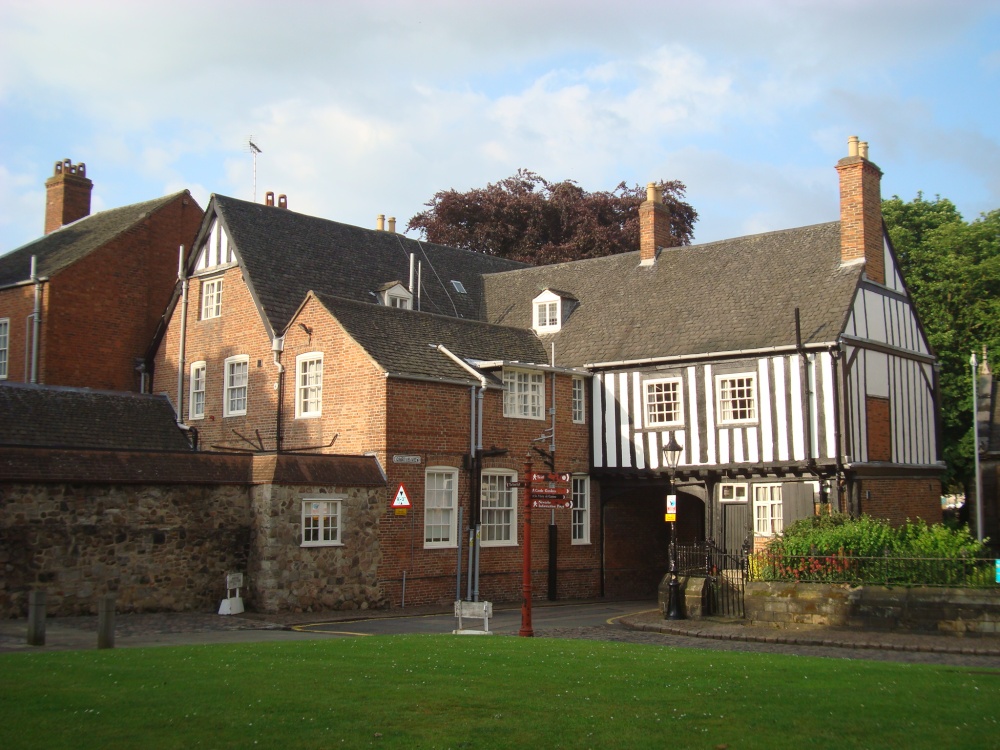 |
The Gatehouse from the Castle Yard A timber framed building erected in the middle of the 15th century. The house is used to accommodate Circuit Judges when they sit at the Crown Court in Leicester. This picture appears in the following picture tour: Camera Make: SONY� Model: DSC-W200� |
 |
The Gatehouse on the site of Leicester Castle The gate structure is connected to part of the St Mary de Castro Church on the right and a section of St Mary's graveyard can be seen through the arch, adjacent to Castle Street. This picture appears in the following picture tour: Camera Make: SONY� Model: DSC-W200� |
 |
The Great Hall of Leicester Castle The Great Hall was built in around 1150 by Robert de Bossu, 2nd Earl of Leicester and was extensively rebuilt and the roof structure replaced in about 1523. The brick frontage dates from 1695. It was used as a Law Court until 1992. The Castle Yard was used for public executions. The Great Hall was also used for sessions of the English Parliament when conditions in London were not considered suitable. This picture appears in the following picture tour: Camera Make: SONY� Model: DSC-W200� |
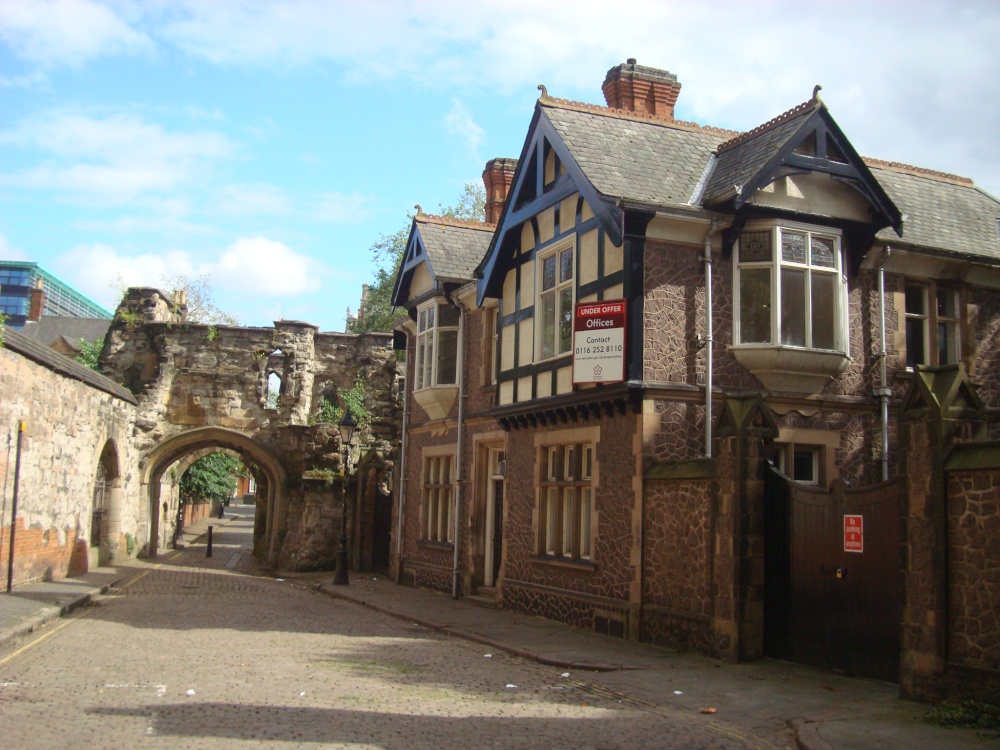 |
Turret Gate The Turret Gate is entrance to Leicester Castle, it was built in the 15th century. This picture appears in the following picture tour: Camera Make: SONY� Model: DSC-W200� |
 |
Statue of Thomas Cook A statue of Thomas Cook (travel pioneer, 1808-1892) by James Walter Butler stands on London Road, outside Leicester Railway Station and was unveiled by Thomas Cook, his great-great-grandson on 14 January 1994. This picture appears in the following picture tour: Camera Make: SONY� Model: DSC-W200� |
 |
St Nicholas' Church St Nicholas' Church is an Anglican Parish Church and the oldest place of worship in Leicester. It is situated next to the Jewry Wall, the remnant of the city's Roman baths. Parts of the church date back to 880 AD and a recent architectural survey suggested possible Roman building work. Today, the church lies just outside the city's inner ring road. Despite being some distance from the campus, it is the official church of the University of Leicester. This picture appears in the following picture tours: Camera Make: SONY� Model: DSC-W200� |
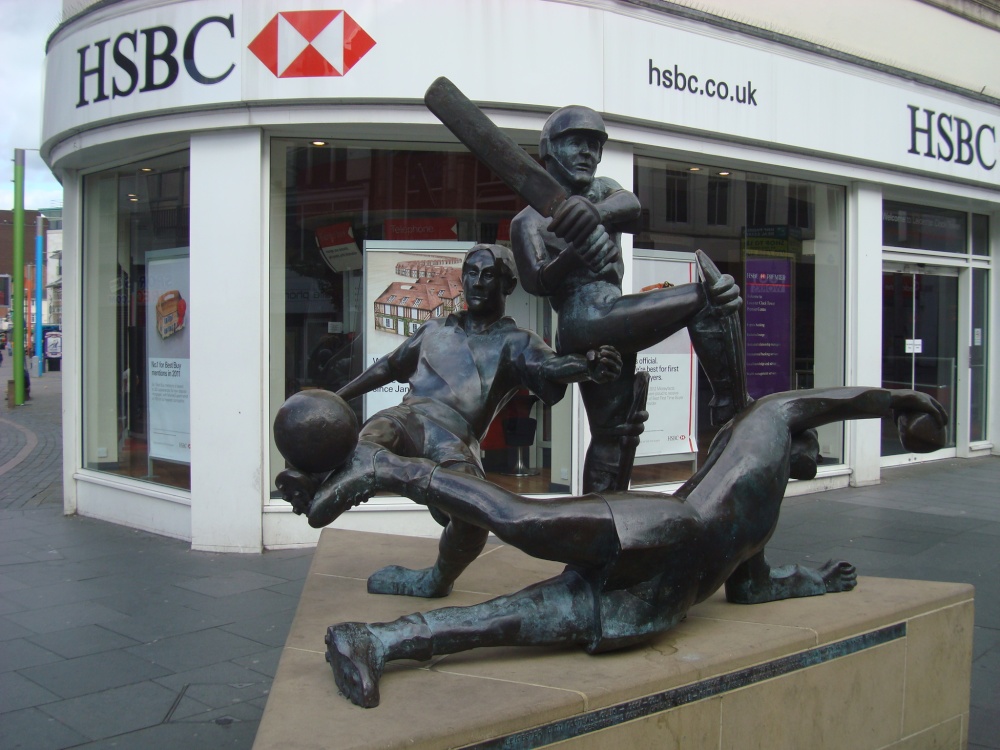 |
Sporting Success by Martin Williams 1998 It stands on the east side of Gallowtree Gate, near its junction with Humberstone Gate. 'Sporting Success' comprises a group of three sportsmen in action: a cricketer, a footballer and a rugby player. The commission of the sculpture followed successful seasons by all three local teams in the 1996-97 seasons. This picture appears in the following picture tours: Camera Make: SONY� Model: DSC-W200� |
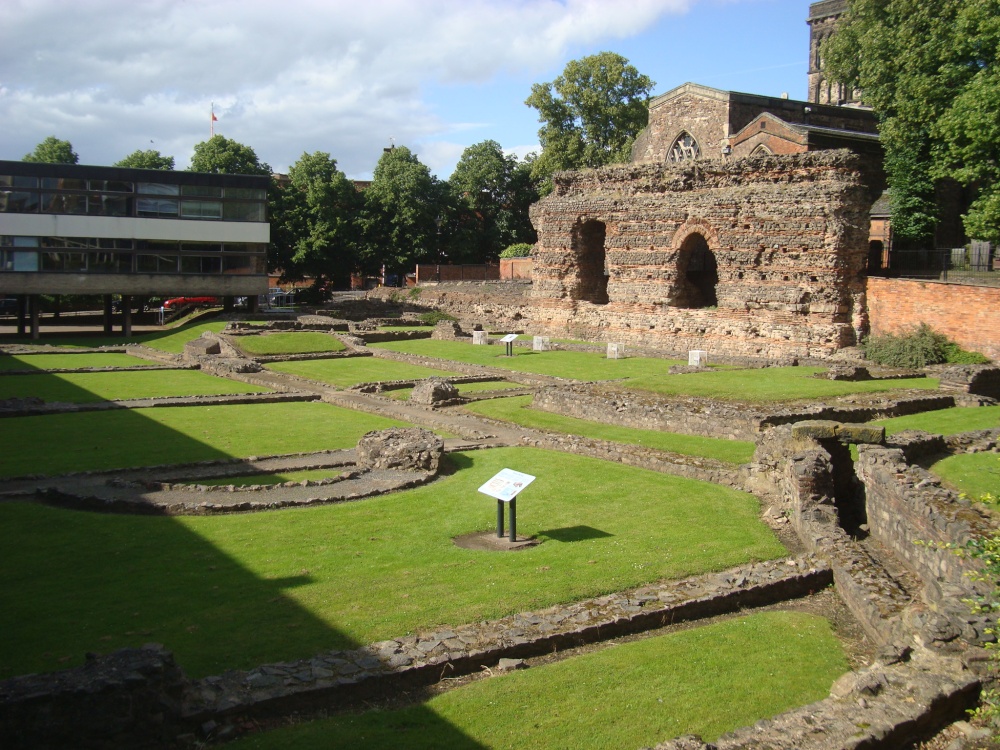 |
Roman baths ruins and the Jewry Wall This picture appears in the following picture tours: Camera Make: SONY� Model: DSC-W200� |
 |
London Road, Leicester Railway Station The Midland Railway Company rebuilt the station between 1892-1894 to a design by the architect Charles Trubshaw, who was well known for other railway-related buildings. Whilst the station frontage remains a good example of late Victorian station architecture. The station clock is reported to be the only hand-wound station clock in the UK This picture appears in the following picture tours: Camera Make: SONY� Model: DSC-W200� |
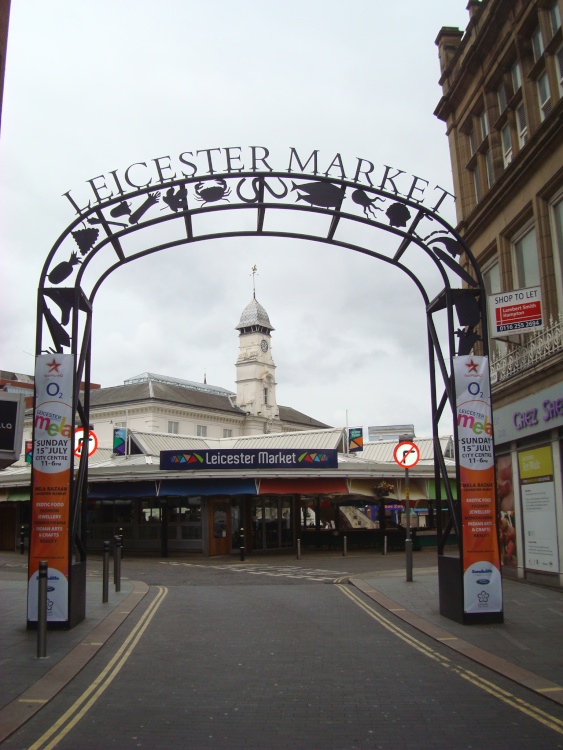 |
Leicester Market Leicester Market is located on Market Place just south of the Haymarket Memorial Clock Tower. It is around 800 years old but was moved to its current site around 700 years ago. It is the largest outdoor covered market in Europe. This picture appears in the following picture tour: Camera Make: SONY� Model: DSC-W200� |
 |
Jewry Wall The Jewry Wall is believed to be the remaining wall of the public baths of Roman Leicester along with foundations of the baths, which are laid out in front of the wall. The wall is nearly 2000 years old and is a rare example of Roman walling. It is the second largest piece of surviving civil Roman building in Britain. The remains of the baths were excavated in the 1930s by Dame Kathleen Kenyon and date from 160 A.D. This picture appears in the following picture tour: Camera Make: SONY� Model: DSC-W200� |
 |
Gravel Street, St Margaret's Bus Station This picture appears in the following picture tour: Camera Make: SONY� Model: DSC-W200� |
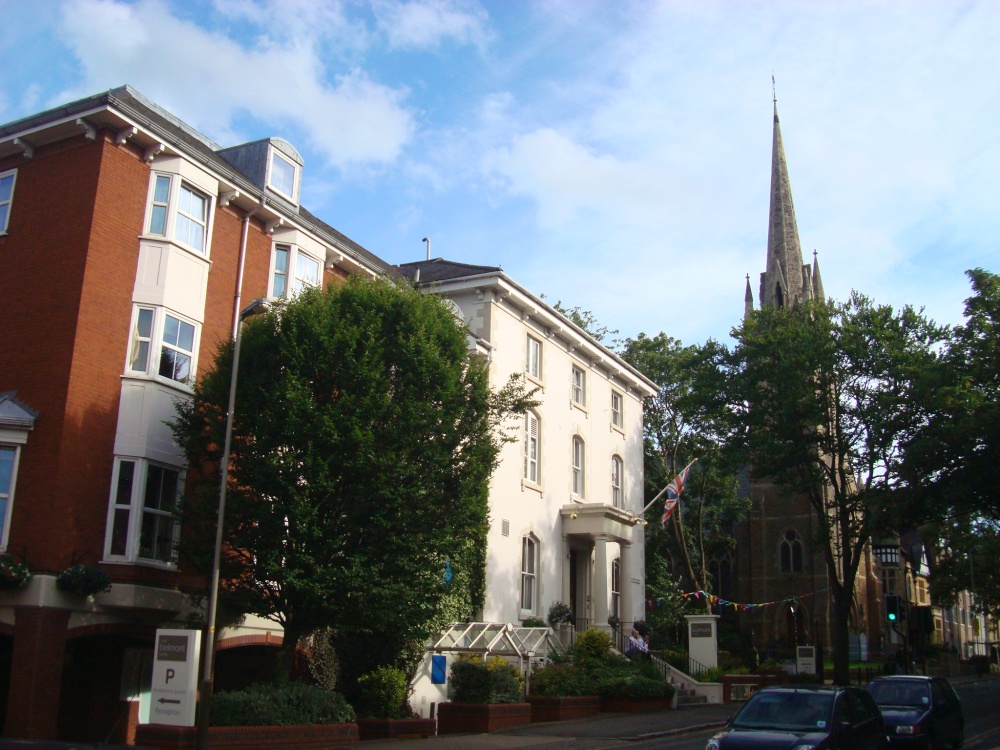 |
De Montfort Street The Belmont Hotel and St Stephen's United Reformed Church. This picture appears in the following picture tour: Camera Make: SONY� Model: DSC-W200� |
 |
Church Gate This picture appears in the following picture tour: Camera Make: SONY� Model: DSC-W200� |
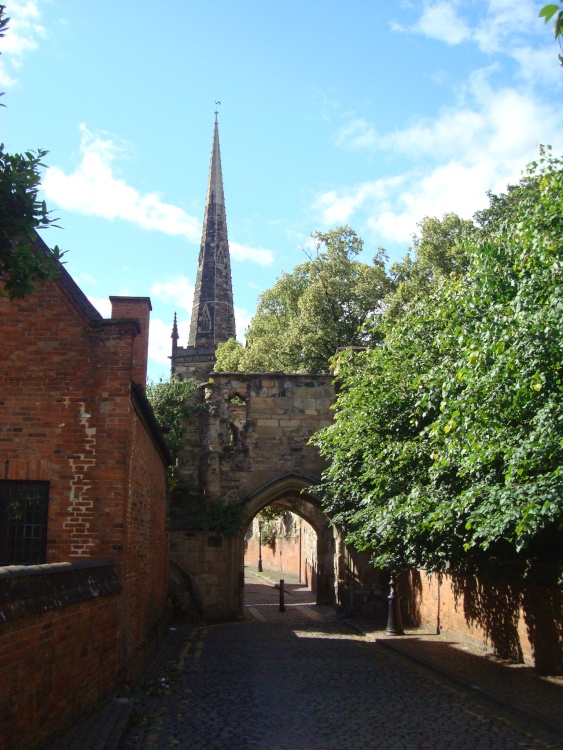 |
Castle View The spire of Church of St Mary de Castro in the background. In the foreground is Leicester Castle south gateway, also known as the 'Turret Gateway', built in 1420, it led to the inner bailey of the Castle. Pass through and you follow in the footsteps of Geoffrey Chaucer and John of Gaunt, 1st Duke of Lancaster. John of Gaunt was a patron and close friend of the poet Geoffrey Chaucer, most famously known for his work The Canterbury Tales. Near the end of their lives Lancaster and Chaucer became brothers-in-law through marriage. Chaucer married Philippa de Roet in 1366, and Lancaster took his mistress of nearly 30 years, Katherine Swynford (de Roet), who was Philippa Chaucer's sister, as his third wife in 1396. Although Philippa died in 1387, the men were bound as brothers and Lancaster's children by Katherine - John, Henry, Thomas and Joan Beaufort - were Chaucer's nephews and neice. This picture appears in the following picture tour: Camera Make: SONY� Model: DSC-W200� |
 |
Haymarket Memorial Clock detail The four benefactors depicted on the Clock Tower are: Simon De Montfort (c.1208-1265). Earl of Leicester and credited with forming the first Parliament in 1265. William Wyggeston (1467-1536) a wealthy wool merchant; twice mayor of Leicester; MP for Leicester 1504 founder of Wyggeston's Hospital. Sir Thomas White (1492-1567). A native of Reading, he endowed various Midlands towns, including Leicester with £40 to be used for interest free loans to young men to establish themselves in business. These funds having been greatly appreciated since the 16th century, and loans are still administered by local trustees. Alderman Gabriel Newton (1683-1762) woolcomber, Mayor of Leicester in 1732. After the death of his only son he used much of his wealth to provide educational facilities for the poorer children of the town. This picture appears in the following picture tours: Camera Make: SONY� Model: DSC-W200� |
 |
Haymarket Memorial Clock detail This picture appears in the following picture tour: Camera Make: SONY� Model: DSC-W200� |
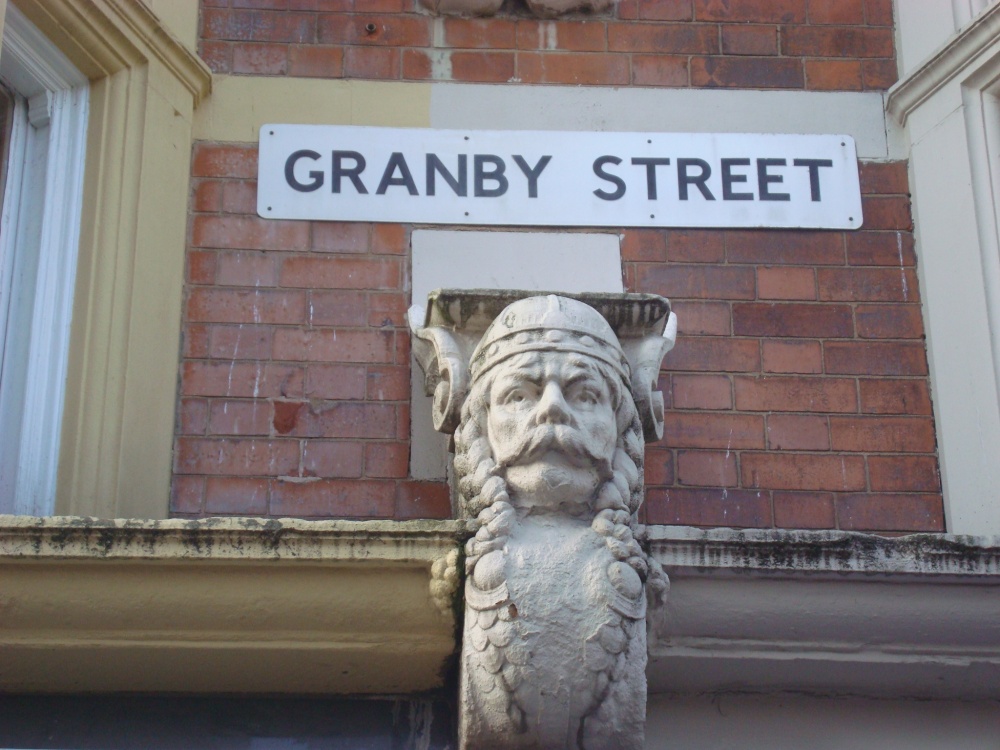 |
Viking Head decoration (70-72 Granby Street) A subtle reminder of Leicester’s period under Danish Law in the 9th century. The city became one of five fortified towns important to the Danelaw. The image of the Vikings was mostly created by Victorian Britain. This head decoration is a good example of this mythologized figure. This picture appears in the following picture tour: Camera Make: SONY� Model: DSC-W200� |
 |
The Leicester Seamstress by James Butler 1990 The statue reflects the female contribution to the local hosiery industry. Most hosiery employees were women, working in small workshops or at home. This picture appears in the following picture tour: Camera Make: SONY� Model: DSC-W200� |
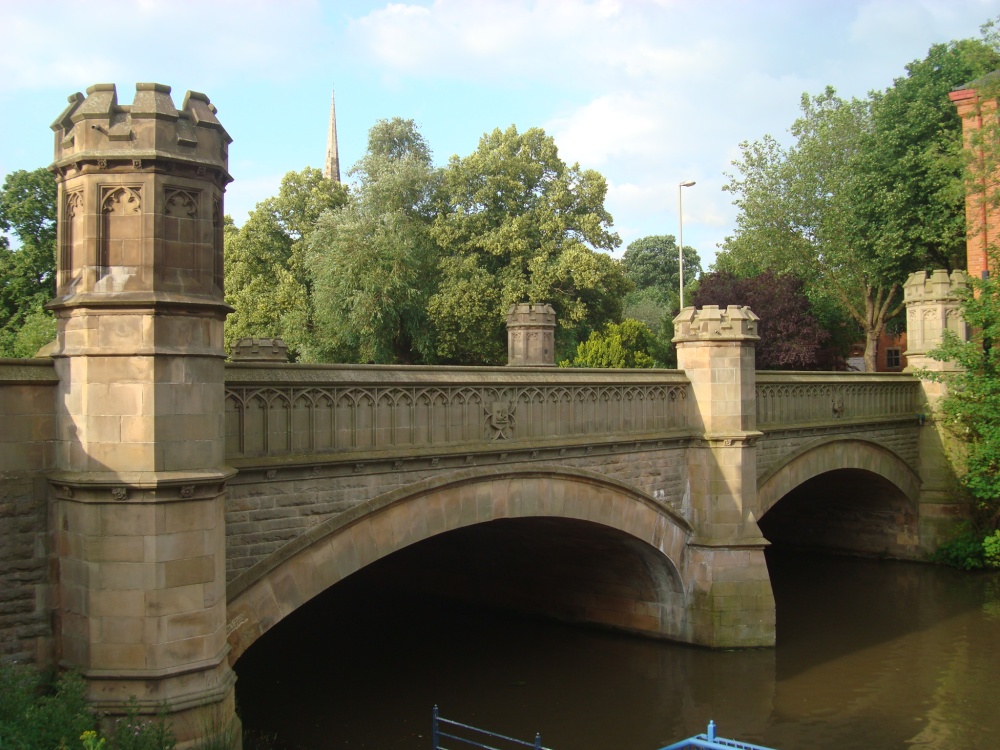 |
The Bridge over the River Soar This picture appears in the following picture tour: Camera Make: SONY� Model: DSC-W200� |